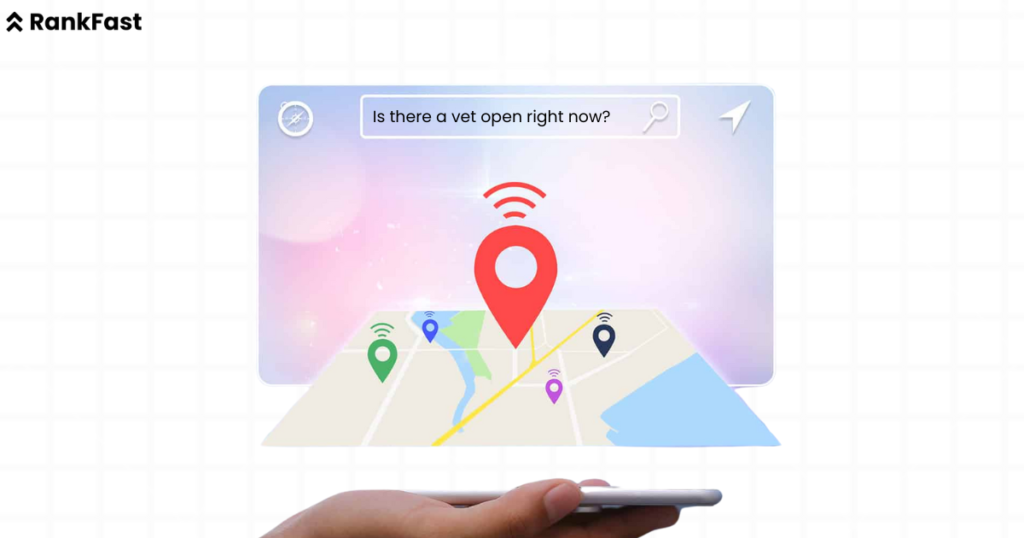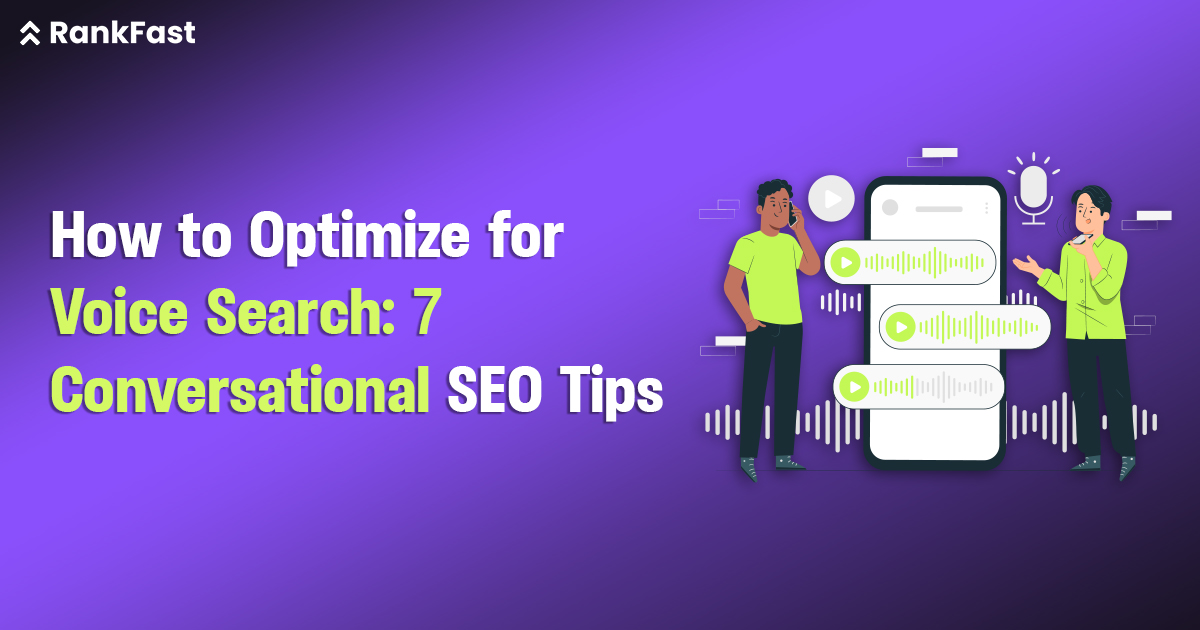Have you ever asked your phone something like, “Where’s the nearest ATM?” or “Which is the best running shoe under 5000?” If yes, then you’re already part of the voice search wave. Now imagine what happens when your site is not ready for it.
This is where most brands fall short. They write for keyboards, not conversations. They chase keywords, not questions. And they ignore how people speak, which is very different from how they type. That’s why they miss traffic, especially from voice assistants.
Here’s the reality: 27% of the global online population now uses voice search on mobile. And this number keeps rising. Yet, most websites are still not structured for voice responses, and that’s a lost opportunity.
This blog breaks down how voice SEO works, why it matters, and how to write and optimize your site to appear in spoken search results. And yes, it’s more than just using long-tail keywords.
What is Voice Search SEO?
Voice Search SEO is the process of optimizing your website content so that it ranks in spoken queries asked through voice assistants like Google Assistant, Siri, Alexa, and others.
Unlike traditional SEO, this focuses more on natural language, direct answers, and short conversational formats. Users ask questions like, “How do I apply for a passport?” instead of typing “passport application process”.

Here, your content needs to do three things at once:
- Be easily understood by machines
- Feel human and natural
- Load fast and look good on mobile
That means structuring pages, headers, and snippets to match how real people ask questions in daily life.
This form of optimization sits at the crossroads of UX, content writing, and technical SEO.
Why Optimize for Voice Search?
Many still treat voice search like a trend. It’s not. It’s a shift in behaviour. Voice is faster than typing, especially on mobile. That’s why it works better for local, urgent, and personal queries.
If you don’t optimize for voice search, here’s what you lose:
- Local search opportunities (e.g., “dentist near me”)
- Featured snippet positions
- Mobile-first visibility
- Zero-click answers
- Competitive branding through assistants
Smartphone users expect direct responses. If your website doesn’t offer them, the assistant skips you.
Let’s go deeper into how you can get picked by voice assistants.
Tip 1: Use Natural, Conversational Keywords
People don’t speak like robots. They don’t say “best affordable laptop 2025”. They ask, “What’s the best budget laptop this year?”
You must match your keywords to natural language. That means:
- Focus on long-tail questions
- Add “how,” “what,” “why,” and “where” queries
- Include prepositions and filler words that reflect speech
Tools you can use:
- AnswerThePublic
- AlsoAsked
- Google’s People Also Ask section
Create variations of each topic with a conversational tone. Don’t just optimize for “voice search SEO tips”, use “how do I optimize my site for voice search?”
Place these phrases in:
- Subheadings
- Paragraph intros
- FAQs
- Meta descriptions
Voice queries trigger responses that sound human. So your content must do the same.
Tip 2: Answer Questions Clearly and Concisely
Voice assistants read answers aloud. They prefer short, exact responses. A 50-word paragraph works better than a 200-word intro.
Structure your answer using:
- Direct sentences
- Simple words
- Lists when needed
Example:
Instead of saying:
“SEO involves multiple processes that…”
Say:
“SEO is the process of improving a site’s visibility in search results.”
Add FAQ blocks at the end of pages. These help Google extract answers. Start answers directly, like you’re replying to a real person.
Don’t hide your answer deep inside the content. Bring it to the top, especially for question-based posts.
If you want featured voice results, write like you’re giving answers, not explanations.
Tip 3: Optimize for Local Voice Searches
A large chunk of voice queries are local. People ask:
- “Where is the nearest pizza shop?”
- “Is there a vet open right now?”
If you run a local business, voice SEO can drive massive foot traffic.
Steps to optimize:
- Keep your Google Business Profile updated
- Use “near me” phrases naturally in content
- Add directions, landmarks, and opening hours
- Mark up location using structured data
Include content like:

- “How to reach us from [famous local spot]”
- “Best restaurant near [area] for biryani”
Optimize landing pages for different neighbourhoods or zones.
Also, write location-specific blog posts. These get indexed fast and improve your chances of appearing in voice-based “near me” results.
Tip 4: Improve Page Speed and Mobile Friendliness
If your page doesn’t load fast, voice assistants won’t wait. They’ll skip to another source.
Use these speed techniques:
- Compress images (WebP format)
- Enable browser caching
- Use CDN for faster delivery
- Minimize code and plugins
- Load important content first (lazy-load the rest)
Mobile UX matters more here. Ensure:
- Buttons are thumb-friendly
- Text is readable without zoom
- Layout adjusts to screen size
- No pop-up blocks content
Run tests on:
- Google PageSpeed Insights
- Lighthouse
- GTmetrix
Speed and mobile make or break voice SEO. Even great answers don’t matter if your page takes 5 seconds to load.
Tip 5: Use Structured Data Markup (Schema)
Schema markup helps Google understand your content better. It adds context around:
- Reviews
- FAQs
- Business info
- Recipes
- Events
Voice assistants pull data from rich results. Without structured data, your chances drop.
Use these schema types:
- FAQPage
- HowTo
- LocalBusiness
- Article
- Breadcrumb
Apply JSON-LD format. Tools like Google’s Rich Results Test help validate your markup.
Schema makes your content machine-readable. That’s essential for voice search, where answers must be quick and structured.
Tip 6: Create Conversational Content
Write like you’re talking to someone. Remove fluff. Be clear, useful, and personal.
How to write conversationally:
- Use shorter sentences
- Ask questions in subheads
- Use “you” and “your” when possible
- Break info into small, digestible chunks
Avoid passive voice. Stick to active, friendly tones.
Instead of saying:
“Content should be optimized for voice.”
Say:
“You should optimize your content for voice.”
Create blog formats like:
- Q&A articles
- How-to guides with simple steps
- Explainer content that’s short and direct
This tone connects better and ranks higher in voice queries.
Tip 7: Focus on Featured Snippets and Zero-Click Results
Most voice search answers come from featured snippets. These are the boxes shown at the top of Google.
Your goal should be:
- Get into position zero
- Structure content in ways Google can extract
To increase your chances:
- Use bullet points, tables, and steps
- Start answering right after the question
- Add FAQs below blog posts
- Optimize for “People Also Ask” questions
Also try:
- Keeping headers short
- Matching query formats like “How to…” or “Can you…”
- Writing definitions in the first paragraph
Zero-click doesn’t mean zero benefit. Voice search drives visibility and brand awareness, even without a click.
Voice Search vs Text Search: Key Differences
Voice and text are not the same. Users behave differently in both. You must optimize content with that in mind.
| Aspect | Text Search | Voice Search |
| Input Style | Short phrases like “buy red shoes” | Conversational: “Where can I buy red shoes near me?” |
| Device Used | Mostly desktop/laptop | Mostly smartphones and smart speakers |
| Intent Type | Research, browsing | Quick, action-based, often local |
| Result Format | Pages and snippets | Spoken answers, rich snippets |
| Keywords Focus | Exact-match | Long-tail, natural language |
Optimize for both, but prioritize voice if your audience is mobile-heavy or local.
Voice Search Optimization Checklist
Here’s a quick checklist to make sure your site is ready:
- Use conversational long-tail keywords
- Add FAQs and answer boxes
- Improve mobile usability
- Speed up page load time
- Apply relevant schema markup
- Optimize for featured snippets
- Add location-based content
- Write with clarity, not fluff
- Keep answers under 50 words where possible
- Test on voice assistants regularly
Print this. Stick it near your content calendar.
Final Thoughts
Voice search isn’t the future. It’s the present. With 27% of users already searching by voice, ignoring it is no longer an option.
From keyword choices to content structure, everything changes when you write for voice. You must answer faster, speak clearly, and guide users in fewer words. But when you get it right, your brand shows up, not just in search results, but in conversations as well.
If you’re serious about being found through voice, start making these changes today. At Rankfast, we help businesses like yours optimize for voice SEO, featured snippets, and structured answers. Let us help your brand be heard.
FAQs
1. How is voice search different from regular search?
Voice search uses spoken questions and prefers clear, short answers. Text search works with typed keywords and broader phrases.
2. Do I need to change my entire content for voice SEO?
Not always. But you must rewrite key parts, like headings, intros, and FAQs, to match how people speak.
3. What tools help with voice SEO?
Use tools like AnswerThePublic, Google’s People Also Ask, PageSpeed Insights, and schema markup generators.
4. Should I focus on long or short keywords for voice?
Long-tail, natural phrases work best. People speak in full questions, not short keywords.
5. Can voice search help with local SEO?
Yes. Most local queries happen through voice. “Dentist near me” or “salon open now” are classic voice searches.
6. Does voice SEO need schema markup?
Yes. Schema helps machines understand your content. It improves the chances of appearing in voice answers.

Leave a Reply